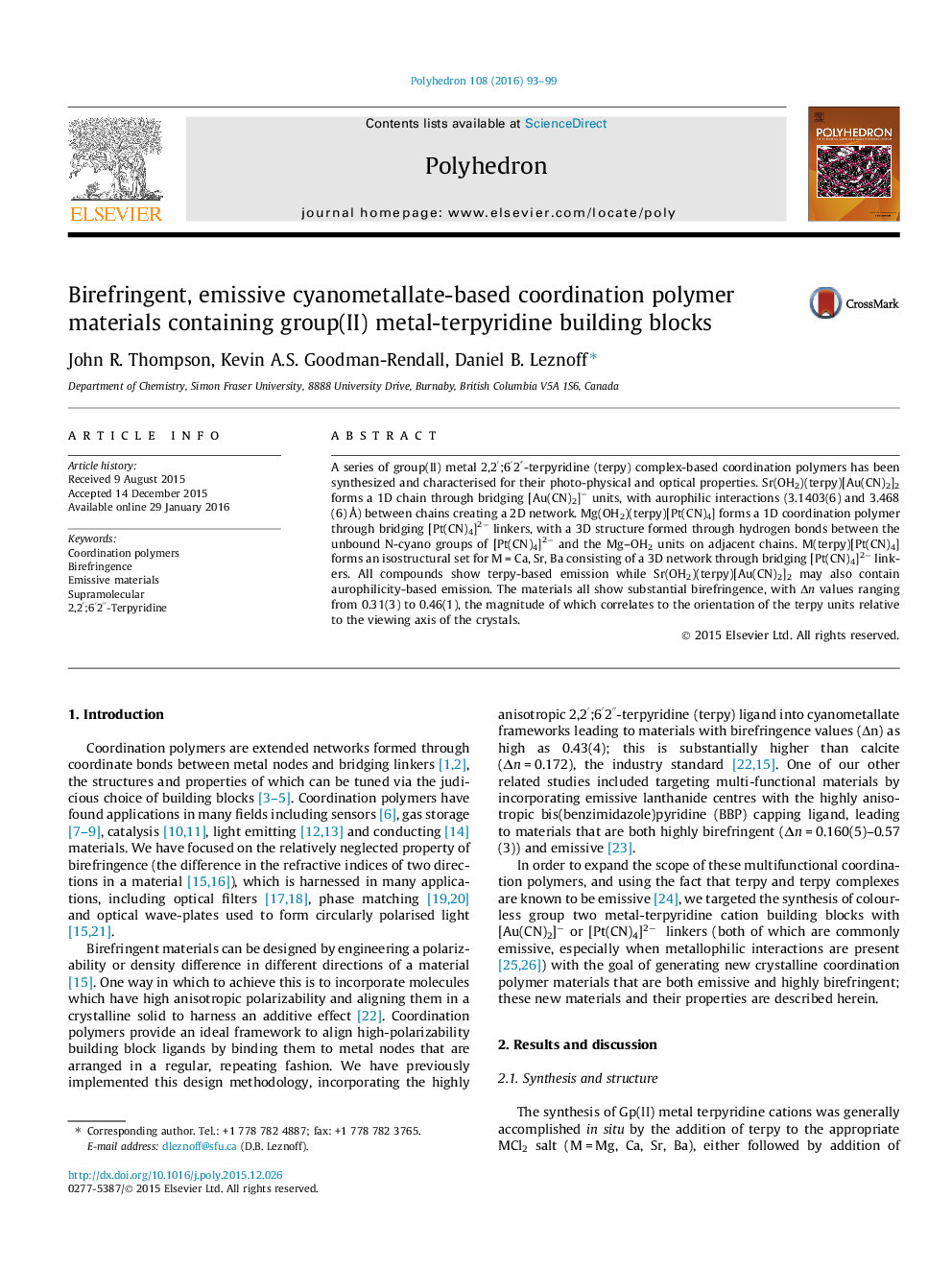| کد مقاله | کد نشریه | سال انتشار | مقاله انگلیسی | نسخه تمام متن |
|---|---|---|---|---|
| 1336547 | 1500232 | 2016 | 7 صفحه PDF | دانلود رایگان |

A series of group(II) metal 2,2′;6′2″-terpyridine (terpy) complex-based coordination polymers has been synthesized and characterised for their photo-physical and optical properties. Sr(OH2)(terpy)[Au(CN)2]2 forms a 1D chain through bridging [Au(CN)2]− units, with aurophilic interactions (3.1403(6) and 3.468(6) Å) between chains creating a 2D network. Mg(OH2)(terpy)[Pt(CN)4] forms a 1D coordination polymer through bridging [Pt(CN)4]2− linkers, with a 3D structure formed through hydrogen bonds between the unbound N-cyano groups of [Pt(CN)4]2− and the Mg–OH2 units on adjacent chains. M(terpy)[Pt(CN)4] forms an isostructural set for M = Ca, Sr, Ba consisting of a 3D network through bridging [Pt(CN)4]2− linkers. All compounds show terpy-based emission while Sr(OH2)(terpy)[Au(CN)2]2 may also contain aurophilicity-based emission. The materials all show substantial birefringence, with ΔnΔn values ranging from 0.31(3) to 0.46(1), the magnitude of which correlates to the orientation of the terpy units relative to the viewing axis of the crystals.
A series of group(II) metal terpyridine-based coordination polymers form multi-dimensional arrays with [Au(CN)2]− and [Pt(CN)4]2−, and are both emissive and birefringent, with high Δn values from 0.31(3) to 0.46(1) (vs. 0.172 for calcite), which correlate to the orientation of the terpy units relative to the viewing axis of the crystals.Figure optionsDownload as PowerPoint slide
Journal: Polyhedron - Volume 108, 29 March 2016, Pages 93–99